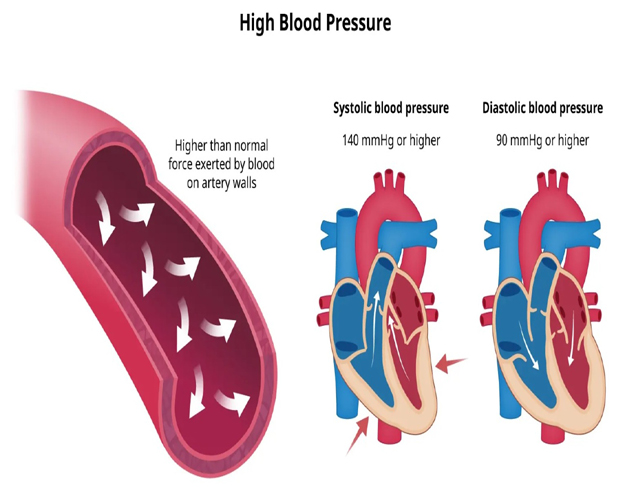
Joint Replacement Surgery: A Patient’s Guide
Quick Highlights
1. What exactly is joint replacement surgery?
2. How do you know if you really need one?
3. Types of surgeries: knees, hips, shoulders & more
4. What happens before, during, and after the surgery
5. Tips for a fast and smooth recovery
6. Real-life experiences and expert advice
7. Common FAQs
Introduction: When Joints Say "Enough"
Imagine waking up every morning with a dull, aching pain in your knee or hip. You try to walk, but every step feels like you're dragging a heavy chain. You skip outings with friends, avoid stairs, and sleep becomes uncomfortable. If this sounds familiar, you're not alone.
Millions of people across the world suffer from chronic joint pain—especially in the knees and hips—due to arthritis, injuries, or age-related wear and tear. For many, joint replacement surgery becomes not just a treatment, but a path back to freedom.
This blog is your trusted companion to understanding joint replacement surgery—clearly, calmly, and completely.
What is Joint Replacement Surgery?
In simple terms, joint replacement surgery involves removing a damaged or diseased joint and replacing it with an artificial one, often made from metal, plastic, or ceramic.
Think of it like replacing a rusty hinge on a door. When the joint is too worn to function, you swap it out with a smoother, pain-free version.
Why is it done?
To reduce or eliminate joint pain, improve mobility, and allow you to return to your normal daily activities—without wincing every time you sit or stand.
When Should You Consider Joint Replacement?
Joint replacement isn’t the first option. Most doctors begin with conservative treatments like physiotherapy, painkillers, injections, or lifestyle changes. But when these stop working, it may be time to think about surgery.
Signs that it may be time:
1. You have constant joint pain, even while resting
2. Difficulty doing everyday things like walking, climbing stairs, or even dressing
3. Your joint feels stiff, swollen, or unstable
4. X-rays show severe joint damage
5. You're feeling increasingly dependent on others
"When the pain starts controlling your life, it's time to take control of the pain."
Types of Joint Replacement Surgeries
1. Knee Replacement
One of the most common. Ideal for people with arthritis or injuries. Surgeons replace the knee cap and ends of the thigh and shin bones with artificial parts.
2. Hip Replacement
If walking, sitting, or bending causes sharp hip pain, a hip replacement might help. The damaged ball-and-socket joint is replaced with a smooth artificial version.
3. Shoulder Replacement
For people with severe shoulder arthritis or rotator cuff tears. The shoulder joint is replaced to allow easier movement and pain relief.
Others: Ankle, elbow, and even finger joint replacements are available in special cases.
What Happens During the Surgery?
Before Surgery:
1. Tests like X-rays, blood tests, and ECGs will be done
2. You’ll meet the anesthesiologist and surgeon
3. Some may be asked to lose weight or strengthen nearby muscles with pre-surgery physiotherapy
4. Stop certain medications as advised
During Surgery:
1. Performed under general or spinal anesthesia
2. Duration: Usually 1 to 3 hours
3. The surgeon removes the damaged parts of your joint
4. A custom-fit artificial joint is inserted and secured
Right After Surgery:
1. You’ll be moved to a recovery room
2. Pain will be controlled with medications
3. Physical therapy starts as early as the same day or next morning
Recovery & Rehabilitation: Step by Step
Recovery is gradual—but with the right care, most patients return to near-normal life.
Recovery Timeline:
|
Time Frame |
What You Can Expect |
|
Week 1–2 |
Walk with a walker, start gentle exercises |
|
Week 3–6 |
Transition to a cane, improved balance and motion |
|
Month 2–3 |
Resume light activities and social life |
|
Month 4–6 |
Return to driving, stairs, and low-impact sports |
|
Month 6+ |
Enjoy a pain-free, active lifestyle |
Physiotherapy is your best friend. The more dedicated you are, the faster you’ll heal.
Benefits vs. Risks
Benefits:
1. Relief from chronic pain
2. Improved joint function and strength
3. Better sleep, mental health, and independence
4. Long-lasting results (15+ years in most cases)
Potential Risks:
1. Infection at the surgical site
2. Blood clots
3. Loosening or wear of the implant over time
4. Rarely, nerve or tissue injury
With skilled surgeons and modern implants, serious complications are rare—but being informed helps you prepare.
Tips for Preparing at Home
1. Make your home fall-proof: Remove loose rugs, wires, and slippery tiles
2. Install grab bars in the bathroom and next to the bed
3. Arrange for a caregiver or family member for at least 2 weeks
4. Keep frequently used items at waist level to avoid bending
Also, prepare mentally—a positive mindset helps healing!
Life After Joint Replacement
After recovery, most people enjoy a life they thought was no longer possible. They walk, travel, dance at weddings, and even garden or swim.
What to avoid:
Running, jumping, or high-impact sports unless your surgeon clears you.
What to enjoy:
Walking, yoga, light trekking, swimming, and a pain-free life!
Summary
Joint replacement surgery can be a safe and highly effective solution for people suffering from chronic joint pain and mobility issues. When performed at the right time and with proper care, it can significantly improve your quality of life by restoring movement and eliminating pain.
At ITM Hospital, we have a dedicated Department of Orthopedics, equipped with state-of-the-art technology and led by a team of experienced orthopedic surgeons. Our experts provide personalized care, from diagnosis to surgery to rehabilitation, ensuring that you receive the best possible outcome every step of the way.
By understanding the procedure, preparing thoroughly, and committing to your recovery plan, you can regain control of your life and return to doing the things you love — pain-free and confidently.
Don’t let joint pain limit your life. A better tomorrow may just be a surgery away.
ITM Hospital & Research Centre.
We truly hope this guide gave you a clearer understanding of joint replacement surgery and how it could help improve your life or the life of a loved one.
For more such simple, reliable, and helpful healthcare content,
Subscribe to our newsletter and stay updated with our latest blogs.
Frequently Asked Questions (FAQs)
Q1. Is joint replacement surgery permanent?
A: While the artificial joint may eventually wear out, most replacements last 15–20 years or more. Some even last a lifetime.
Q2. Will I be able to walk right after surgery?
A: Yes, most patients start walking (with support) within 24–48 hours after surgery under the guidance of a physiotherapist.
Q3. What is the best age for joint replacement?
A: There's no "best" age. It's more about your condition and overall health. People in their 40s to 80s have benefited from surgery.
Q4. Can both knees or hips be replaced at the same time?
A: Yes, in some cases doctors do a bilateral replacement, but it depends on your health and recovery ability.
Q5. How painful is recovery?
A: You’ll have some discomfort initially, but with medications and physical therapy, most people feel much better within weeks.









